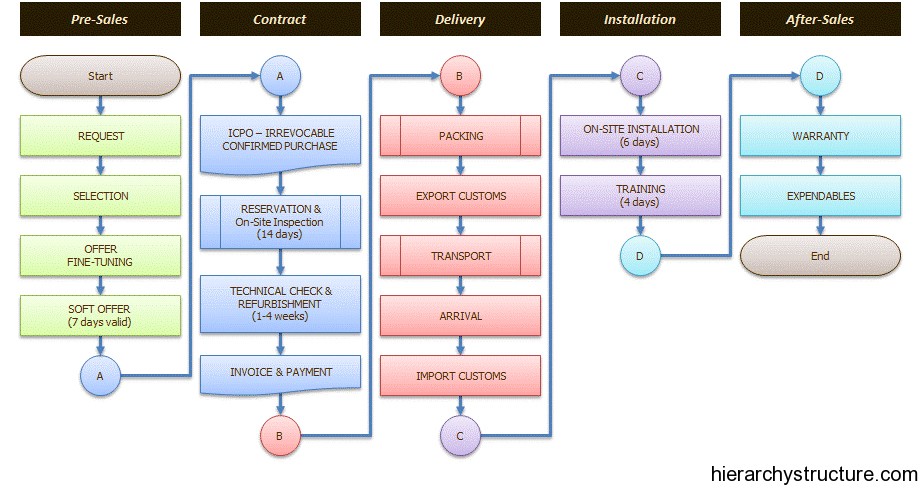The business process hierarchy is the pictorial representation of the course of decomposition of complex processes into detailed steps or lower level processes. The components of these higher level processes of abstraction are arranged in hierarchical format developed as a result of decomposition of each process into a set of lower level processes which again get decomposed further. All the processes that come out from one complex process share the same level in the business process hierarchy. This is also known as the business process architecture.
A business process can be defined as a series of tasks which needs certain inputs to trigger the process or its series of tasks to achieve a certain output. Hence we can simply define a process as the transformation of inputs into outputs with the help of certain tasks. If we consider the hierarchy of business processes, then the source of input for one process may be one or more than one process, and similarly the destination of output may become input for one or more than one process.
While discussing the business process hierarchy, it becomes quite vital to consider the two very important dimensions of the business process formats – The enablers and the guides.

The guides play a very important role during the course of the process but do not get consumed during the process. As far as the business processes are concerned, the guides may include business strategies, business policies, the knowledge required for the execution of the process etc. The enablers can be referred to as the re-usable tools. In the context of business processes the examples of enablers include people, business infrastructure, business data and systems etc.
Following is the illustration of the levels of a business process hierarchy:
The topmost level in the business process hierarch lays the value Chain. The value chain symbolizes a major business line. A business organization may have one or more value chain.
On the next level on the business process hierarchy, the value chain gets divided into the business processes that are related directly to the value chain. These business processes at the next level get divided into Process depending on the nature of the business process.
Again, on the next level processes get divided into sub processes, sub sub processes and sub sub sub processes and so on. This decomposition may go on to an arbitrary depth in the hierarchy depending on the nature & complexity of business processes.
The lowest level in the business process hierarchy comprises of the Activities, which can be defined as the smallest sub process which cannot be further decomposed.
In this way, it can be observed that the course of business process hierarchy is never fixed & cannot be structured on the basis of certain rules. It will keep on decomposing till the processes reach the lowest level where further decomposition is not possible. This decomposition helps the business organizations to give attention to each individual process in order to attain perfection in their work.
Know about marketing business hierarchy: click here
